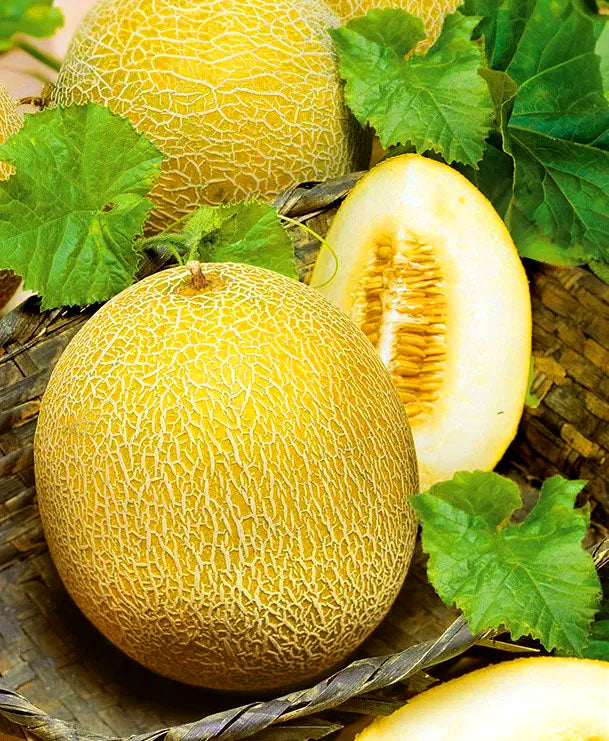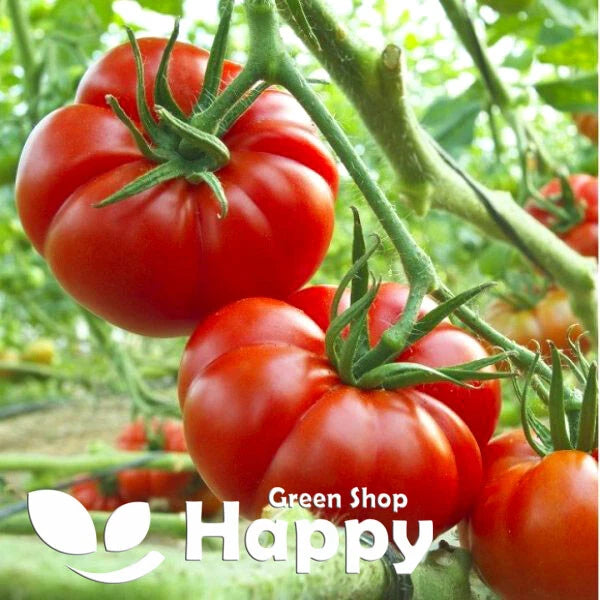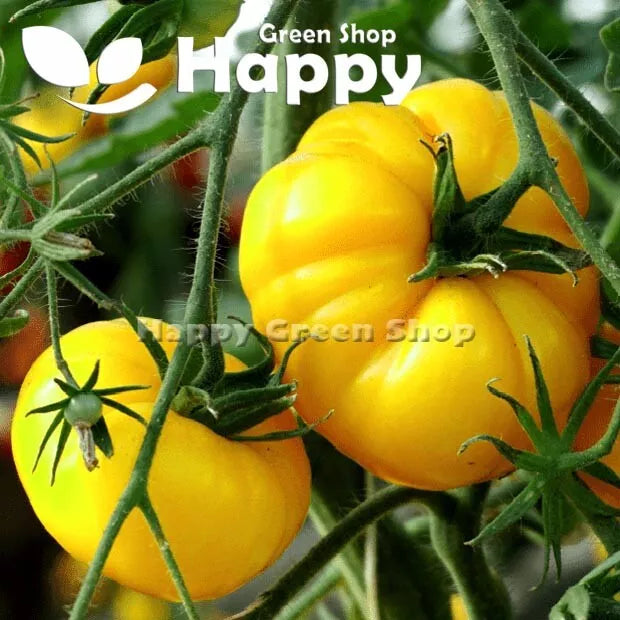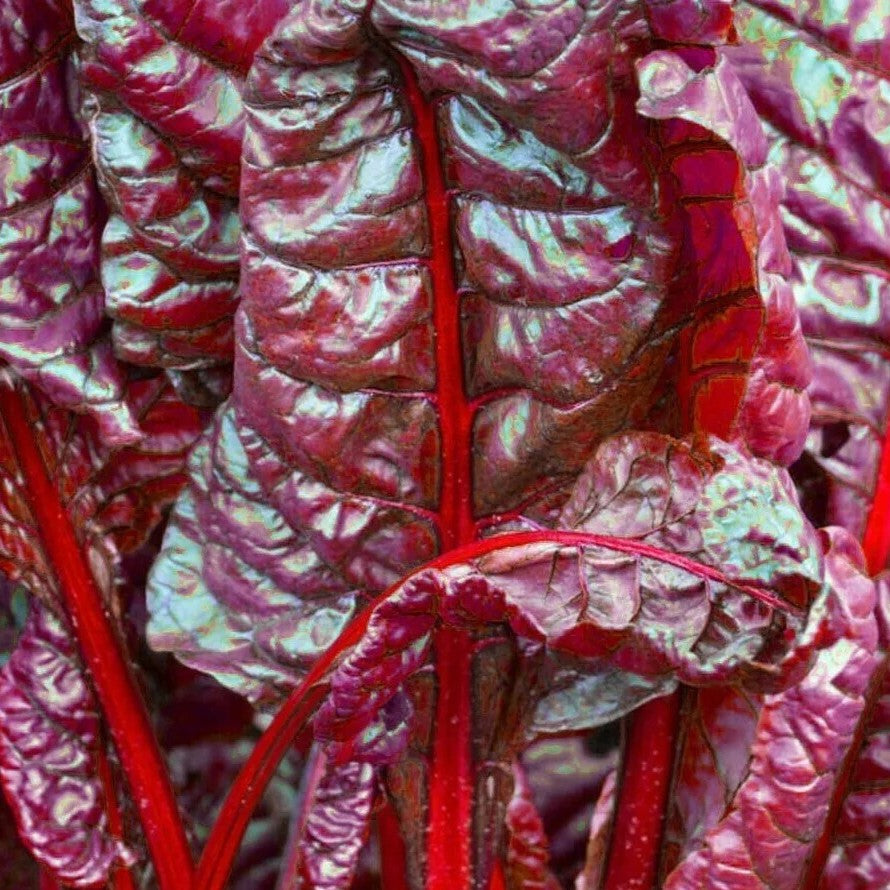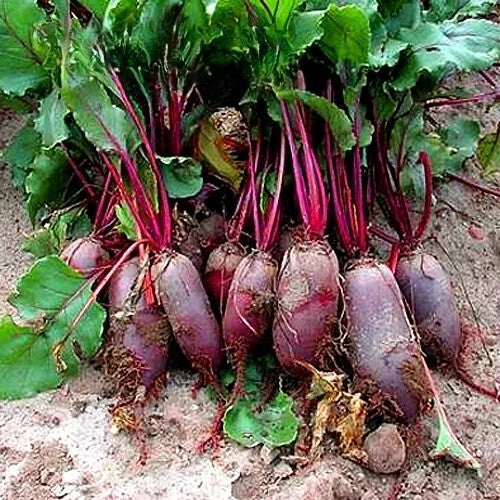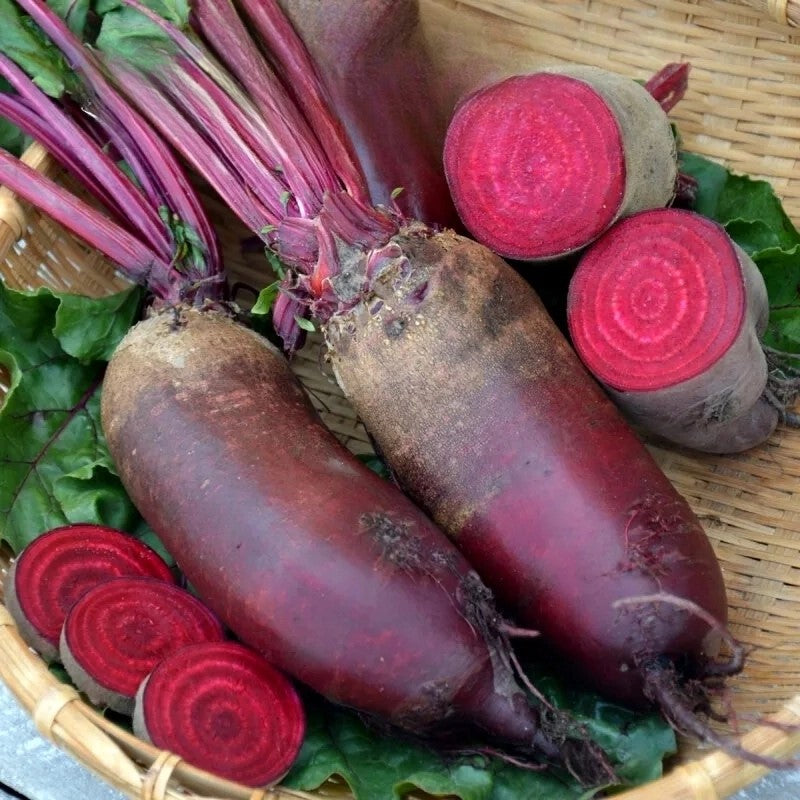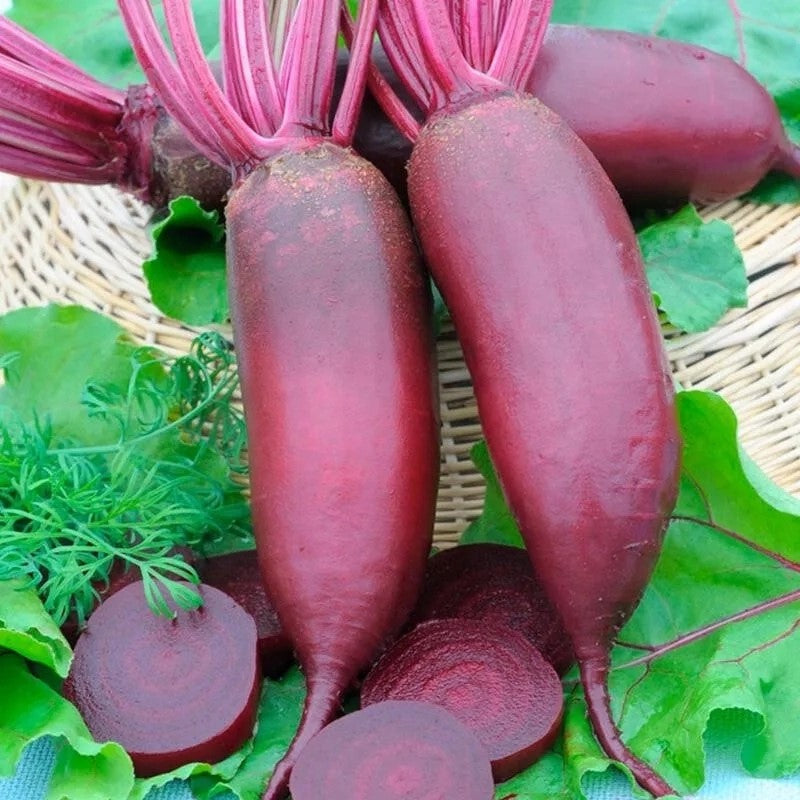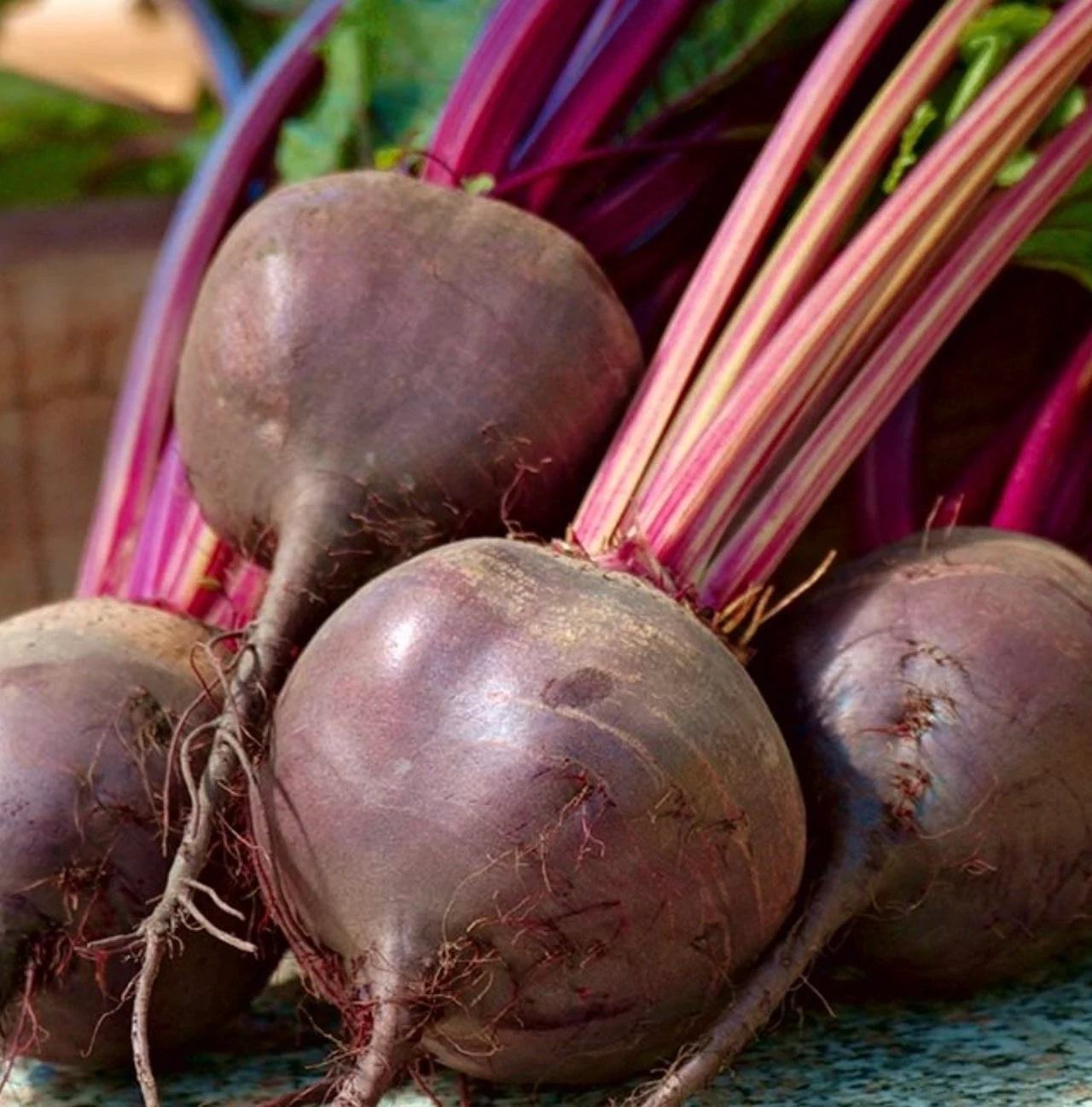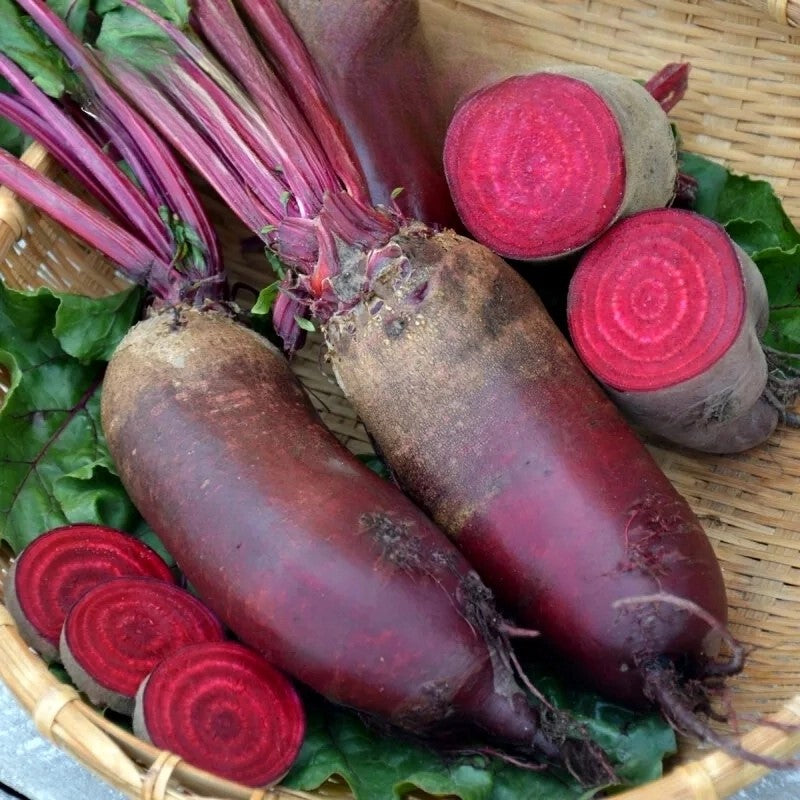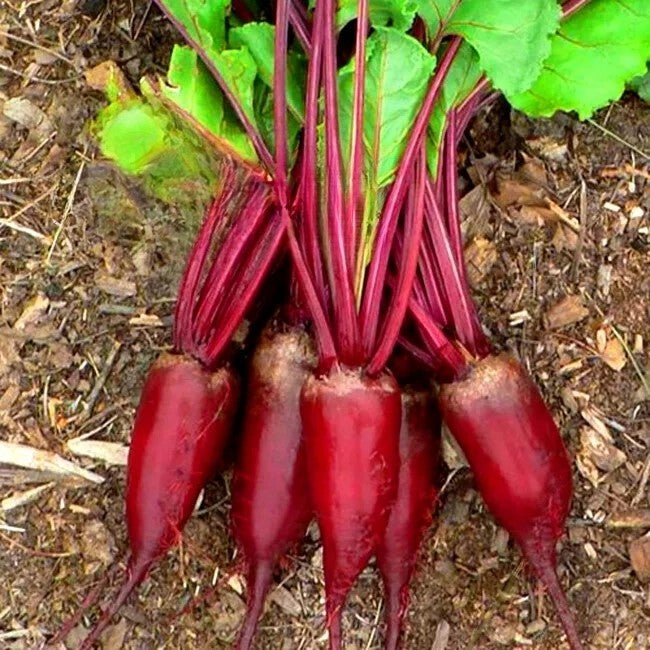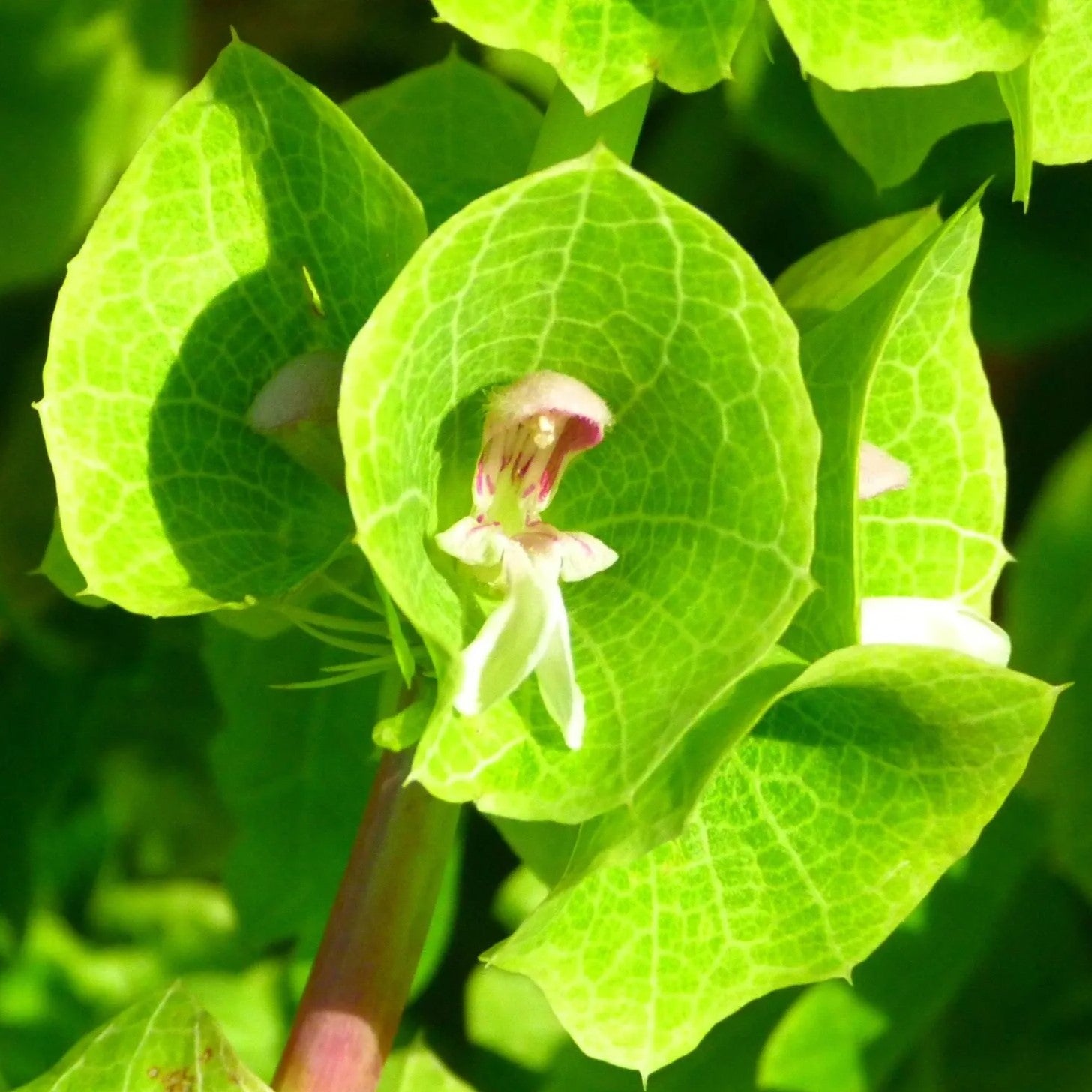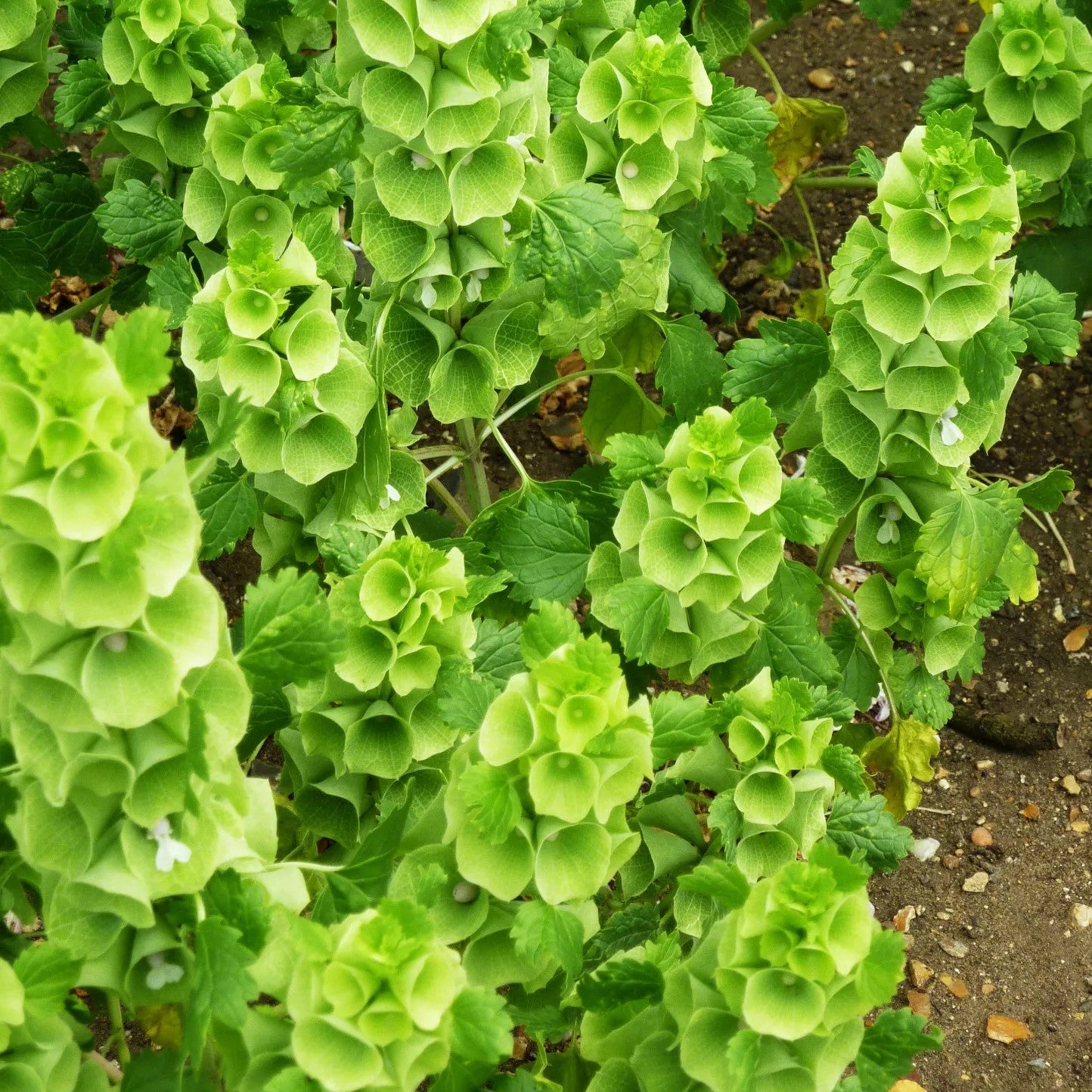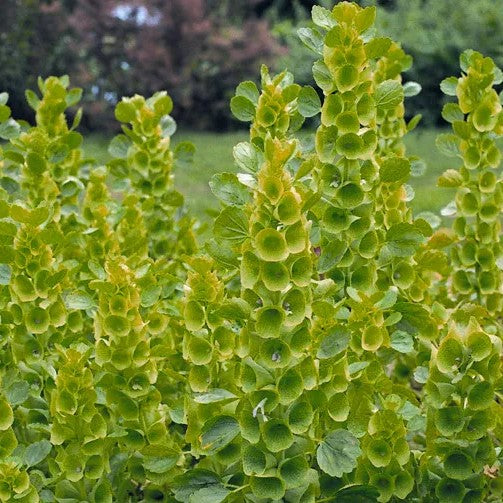Sort by:
1113 products
1113 products
Beefsteak Tomato 'Marmande' Seeds (Solanum lycopersicum)
Grow classic French flavor with Beefsteak Tomato 'Marmande' (Solanum lycopersicum). This heritage variety produces large, ribbed red fruits with rich, juicy flesh, perfect for slicing, salads, sandwiches, and cooking. Indeterminate and highly productive, ‘Marmande’ adds a gourmet touch to home gardens, raised beds, and greenhouses.
How to Grow
-
Sow seeds indoors 6–8 weeks before the last frost.
-
Use fertile, well-drained soil in a sunny location.
-
Sow seeds 0.5–1 cm deep, keeping soil moist at 20–25°C until germination (7–14 days).
-
Transplant seedlings outdoors after frost, spacing 50–60 cm apart.
-
Support plants with stakes or cages and harvest fruits when fully red and firm.
Key Features
-
Heritage French beefsteak variety
-
Produces large, ribbed red fruits with juicy flesh
-
Indeterminate and high-yielding
-
Ideal for fresh eating, salads, sandwiches, and cooking
-
Thrives in gardens, raised beds, and greenhouses
Ideal For
-
Home gardens, allotments, and greenhouse growing
-
Fresh slicing, salads, and cooking
-
Gardeners seeking traditional French tomato varieties
-
Continuous summer harvests
Sowing
-
Best time: Indoors 6–8 weeks before last frost
-
Depth: 0.5–1 cm
-
Spacing: 50–60 cm apart
-
Prefers full sun, fertile, well-drained soil
Quick Tip
-
Prune side shoots to improve airflow and encourage larger, juicier fruits.
Beefsteak Tomato 'Yellowstone' – Seeds (Solanum lycopersicum)
Grow Beefsteak Tomato 'Yellowstone', a striking heirloom variety known for its large, golden-yellow fruits with a sweet, mild flavor. Perfect for fresh salads, sandwiches, and cooking, this tomato delivers juicy, meaty fruits ideal for slicing. High-yielding and vigorous, 'Yellowstone' is a favorite for gardeners seeking visually stunning and flavorful tomatoes.
How to Grow
. Sow indoors: February – April, 0.5–1 cm deep in seed trays or pots
. Transplant outdoors: After last frost, spacing 50–70 cm apart
. Prefers fertile, well-drained soil with full sun
. Support plants with stakes or cages and water consistently
. Harvest: When fruits are fully colored and slightly soft to the touch
Key Features
. Heirloom yellow beefsteak tomato with large, juicy fruits
. Sweet, mild flavor perfect for fresh eating and cooking
. High-yielding, vigorous growth
. Ideal for salads, sandwiches, sauces, and preserves
. Suitable for greenhouse or open-ground cultivation
Ideal For
. Home gardeners seeking colorful heirloom tomatoes
. Fresh salads, sandwiches, and culinary preparations
. Greenhouse or outdoor garden growing
. Gardeners looking for large, flavorful fruits
Sowing & Harvest
. Sow: February – April
. Harvest: July – September
Quick Tip
Stake or cage plants early to support heavy fruits and prevent damage while ensuring good air circulation.
Beet Leaf 'Bull's Blood' – Seeds (Beta vulgaris)
Beet Leaf 'Bull's Blood' is a striking dual-purpose variety, prized for its deep red-purple leaves and tender beet roots. The young leaves are excellent for adding vibrant color and a mild, earthy flavor to salads, while mature leaves can be cooked like spinach. The roots are small but sweet, making them ideal for roasting or boiling.
With its ornamental foliage and culinary versatility, this variety is perfect for gardeners who want both beauty and harvest from the same plant.
How to Grow
-
Sow outdoors: March – July
-
Depth: 1–2 cm
-
Spacing: 10 cm apart in rows 30 cm apart
-
Position: Full sun
-
Soil: Fertile, well-drained, rich in organic matter
-
Watering: Keep soil moist to encourage steady growth
Key Features
-
Dual-purpose variety grown for both leaves and roots
-
Striking dark red-purple foliage adds color to the garden
-
Young leaves ideal for salads, mature leaves for cooking
-
Sweet, tender roots suitable for roasting or boiling
-
Easy to grow and highly ornamental
Harvest
-
Baby leaves: From 30 days
-
Roots: July – October
-
Harvest young leaves regularly to encourage new growth.
Short Tip
Pick leaves when young for the best flavor and continuous regrowth.
Beetroot 'Alexis' – Seeds
(Beta vulgaris) – Sweet, Tender & Early Harvest Variety
Beetroot 'Alexis' is a reliable, early-maturing variety known for its smooth, uniform, round roots with intensely dark red flesh that remains free of rings. It has a sweet, tender flavor even when roots grow larger, making it suitable for fresh eating, roasting, juicing, and preserving. The variety also shows good resistance to bolting.
Key Features
-
Type: Hardy biennial, grown as annual
-
Roots: Round, uniform, smooth skin
-
Flesh: Deep red, no rings
-
Flavor: Sweet, tender, mild earthy taste
-
Harvest: Early to mid-season
-
Use: Fresh salads, cooking, juicing, pickling, storage
Ideal For
-
Kitchen & home gardens
-
Early cropping with reliable yields
-
Fresh culinary use & winter storage
-
Succession sowing for continuous supply
Sowing & Growing
-
Sow outdoors: April–July, in rows 2–3 cm deep.
-
Spacing: 10 cm between plants, 25–30 cm between rows.
-
Soil: Fertile, light, well-drained, stone-free soil.
-
Harvest: June–October, depending on sowing time.
Care Tips
-
Thin seedlings early to allow roots to swell properly.
-
Keep soil consistently moist for tender, sweet roots.
-
Harvest when small for baby beets or later for larger storage roots.
Beetroot 'Chioggia' – Seeds
(Beta vulgaris) – Traditional Italian Heirloom with Striking Rings
Beetroot 'Chioggia' is a famous Italian heirloom variety known for its stunning candy-striped flesh, with alternating pink and white rings. Sweet, mild, and tender, it’s perfect for eating raw in salads to show off its striking appearance, or cooked for a softer, delicate flavor. Easy to grow and quick to mature, it adds both beauty and taste to the garden and kitchen.
Key Features
-
Type: Biennial root crop, grown as annual
-
Roots: Round, medium-sized with concentric pink and white rings
-
Flavor: Sweet, mild, tender texture
-
Harvest: Summer to autumn
-
Use: Salads, roasting, pickling, juicing
Ideal For
-
Unique and decorative salads
-
Traditional and gourmet cooking
-
Kitchen gardens and allotments
-
Beginner-friendly vegetable growing
Sowing & Growing
-
Sow outdoors: March–July, thin seedlings as they grow.
-
Spacing: 10 cm between plants, 30 cm between rows.
-
Soil: Loose, fertile, well-drained soil.
-
Sunlight: Full sun for best development.
-
Harvest: June–October, when roots reach 5–7 cm in diameter.
Care Tips
-
Keep soil moist for tender, juicy roots.
-
Thin seedlings early to prevent overcrowding.
-
Harvest young for best flavor and color.
Beetroot 'Detroit 2 Crimson Globe' – Seeds (Beta vulgaris)
The classic Detroit 2 Crimson Globe beetroot is a reliable and popular variety, producing smooth, round roots with deep crimson flesh. Known for its sweet, earthy flavor and fine texture, it’s ideal for roasting, boiling, pickling, or enjoying raw in salads. An excellent keeper, it stores well after harvesting, making it a staple for kitchen gardens.
How to Grow
-
Sow seeds outdoors from March to July.
-
Sow thinly, 2 cm deep, in rows 30 cm apart.
-
Thin seedlings to 10 cm apart once established.
-
Prefers fertile, well-drained soil in full sun.
-
Harvest when roots are firm and smooth, around golf-ball size for the best flavor.
Key Features
-
Classic heirloom beetroot variety
-
Smooth, round roots with deep crimson flesh
-
Sweet, earthy taste with tender texture
-
Suitable for fresh use, storage, or pickling
-
Easy and reliable for all gardeners
Ideal For
-
Roasting, boiling, and pickling
-
Salads and fresh eating
-
Kitchen gardens, allotments, or raised beds
-
Long-term storage after harvest
Sowing & Harvest
-
Sow: March to July
-
Depth: 2 cm
-
Spacing: 10 cm between plants, 30 cm between rows
-
Harvest: June to October
Quick Tip
-
For a continuous supply, sow little and often every 2–3 weeks until midsummer.
Beetroot 'Monorubra' – Seeds
(Beta vulgaris) – Uniform, Smooth & Sweet Beetroot
Beetroot 'Monorubra' is a high-quality, uniform variety valued for its smooth round roots and deep red flesh without rings. It has a sweet, earthy flavor, making it perfect for fresh salads, juicing, roasting, and pickling. The roots store well, and the young leaves can also be enjoyed as a nutritious leafy green.
Key Features
-
Type: Hardy biennial, grown as annual
-
Roots: Smooth, round, uniform
-
Flesh: Deep red, tender, ring-free
-
Flavor: Sweet, earthy
-
Harvest: Mid to late summer
-
Use: Fresh eating, juicing, cooking, pickling, storage
Ideal For
-
Kitchen gardens & allotments
-
Succession sowing for continuous harvest
-
Fresh cooking & preserving
-
Nutritious baby leaf greens
Sowing & Growing
-
Sow outdoors: April–July, thinly in drills 2–3 cm deep.
-
Spacing: 10 cm between plants, 25–30 cm between rows.
-
Soil: Light, fertile, well-drained, stone-free.
-
Harvest: June–October, depending on sowing time.
Care Tips
-
Thin seedlings early for best root development.
-
Keep soil moist to prevent roots from becoming woody.
-
Harvest young for tender roots or leave to mature for storage.
Beetroot (Cylindrica) ‘Kahira’ – Seeds (Beta vulgaris)
Beetroot ‘Kahira’ is a traditional Egyptian cylindrical variety, well-loved for its uniform shape, tender flesh, and sweet earthy flavor. Its elongated roots slice easily into even rounds, making it a favorite for cooking, pickling, and storage. Productive and reliable, ‘Kahira’ is a hardy beetroot that thrives in a wide range of soils and climates.
How to Grow
-
Sow direct outdoors: March – July in well-prepared soil.
-
Sow 2 cm deep in rows 30 cm apart.
-
Thin seedlings to 10 cm apart once established.
-
Keep soil moist for tender, juicy roots.
Key Features
-
Cylindrical roots for easy slicing
-
Sweet, tender flesh with rich flavor
-
High-yielding and uniform growth
-
Great for cooking, salads, and pickling
-
Excellent storage variety
Ideal For
-
Fresh salads, roasting, and boiling
-
Pickling and preserving
-
Long-term storage for winter use
Sowing & Harvest
-
Sow: March – July
-
Harvest: June – October
Quick Tip
Harvest when young for extra tenderness, or allow to mature for larger roots ideal for storage and preserving.
Bells of Ireland – Striking Green Spires for Garden and Bouquets
Bells of Ireland (Molucella laevis) produces tall, elegant green spires adorned with cup-shaped calyces, perfect for adding vertical interest to garden beds or floral arrangements. These hardy annuals are easy to grow and provide a unique, fresh green accent that lasts in bouquets.
What Makes It Special
-
Tall, elegant green spires
-
Unique cup-shaped calyces
-
Long-lasting in fresh or dried arrangements
-
Adds vertical interest to gardens and floral displays
Key Features
-
Hardy annual
-
Grows 60–90 cm tall
-
Blooms in mid to late summer
-
Thrives in full sun with well-drained soil
-
Excellent for cutting and drying
Ideal For
-
Garden borders and beds
-
Cut flowers and bouquets
-
Floral arrangements and decorations
-
Adding unique greenery to landscapes
Sowing
-
Sow indoors 6–8 weeks before last frost or direct outdoors after frost
-
Plant seeds 0.5–1 cm deep
-
Germination: 14–21 days at 18–22°C
-
Space 20–30 cm apart
-
Water moderately and ensure full sun
Showing 99/1113




